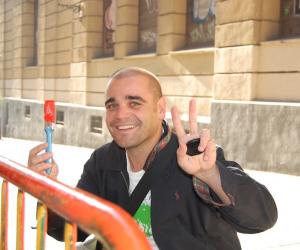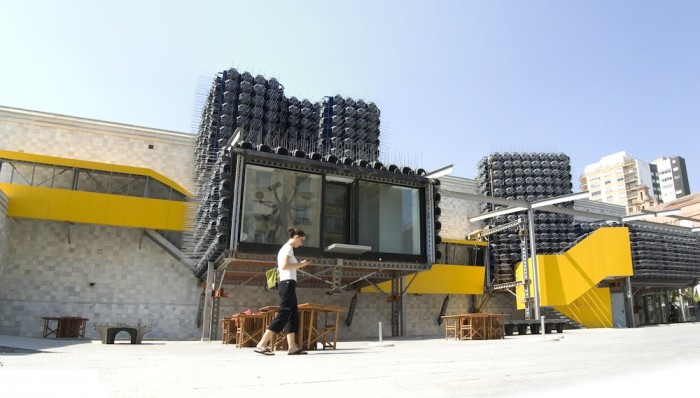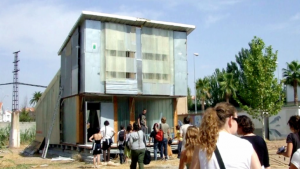From the Series
Santiago Cirugeda is every city bureaucrat’s nightmare. The activist architect knows Spain’s city planning laws so well, he finds multiple wily ways around them to occupy disused land or to build structures where he is not supposed to. But that’s not all; with each intervention, the subversive architect releases his “how-to”: a step-by-step recipe for replicating his project.
Cirugeda, whose Recetas Urbanas practice is based in Seville, Spain, will speak about his self-build philosophy at Design Indaba Conference 2015. His work signals a fervently do-it-yourself engagement with city-making at a time when Europe’s financial austerity is confronting architects with dwindling commissions and jobs.
As such, he is a leading voice in the movement towards a new kind of self-built architecture. Talking about his concept of “urban reserves” – public spaces created for leisure and recreation in the city – he says: “What we can certainly say, is that this personal and intimate action takes place outside everything politicians and professionals may plan. It follows ways that are labelled by difference, by independence, and it makes obvious that the citizen plays a very important role in the development and construction of the environment he lives in.”
These four projects by Cirugeda represent different points of entry into the urban fabric:




![Recetas Urbanas released a set of instructions titled “Taking the Street” to accompany the project. It comes with the proviso: “You should preferably build it [the skip] yourself, as in this way you wiIl avoid any possible misunderstandings with the firm contracted.” Cirugeda advises the use of a KUVA SC. 670-794409 skip, which can be loaned to people wanting to create “reserves of urban land”. It is in the interpretation of what constitutes an urban reserve that his creativity comes in: “children’s playground, information point, reading room, exhibition space, flamenco venue, giant flowerpot, etc.”](https://www.designindaba.com/sites/default/files/styles/scaledlarge/public/node/galleries/19538/gallery/00803.jpg?itok=p7a-0XaG)










